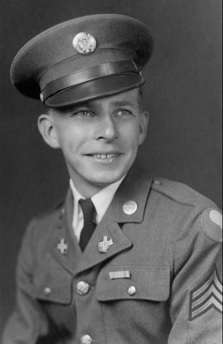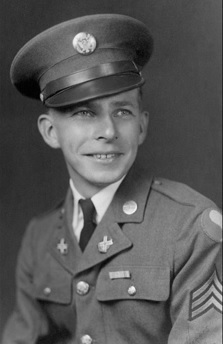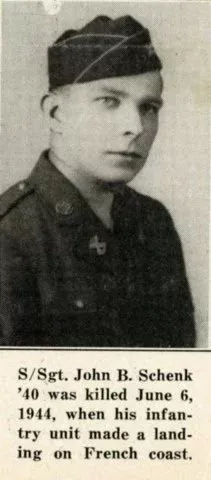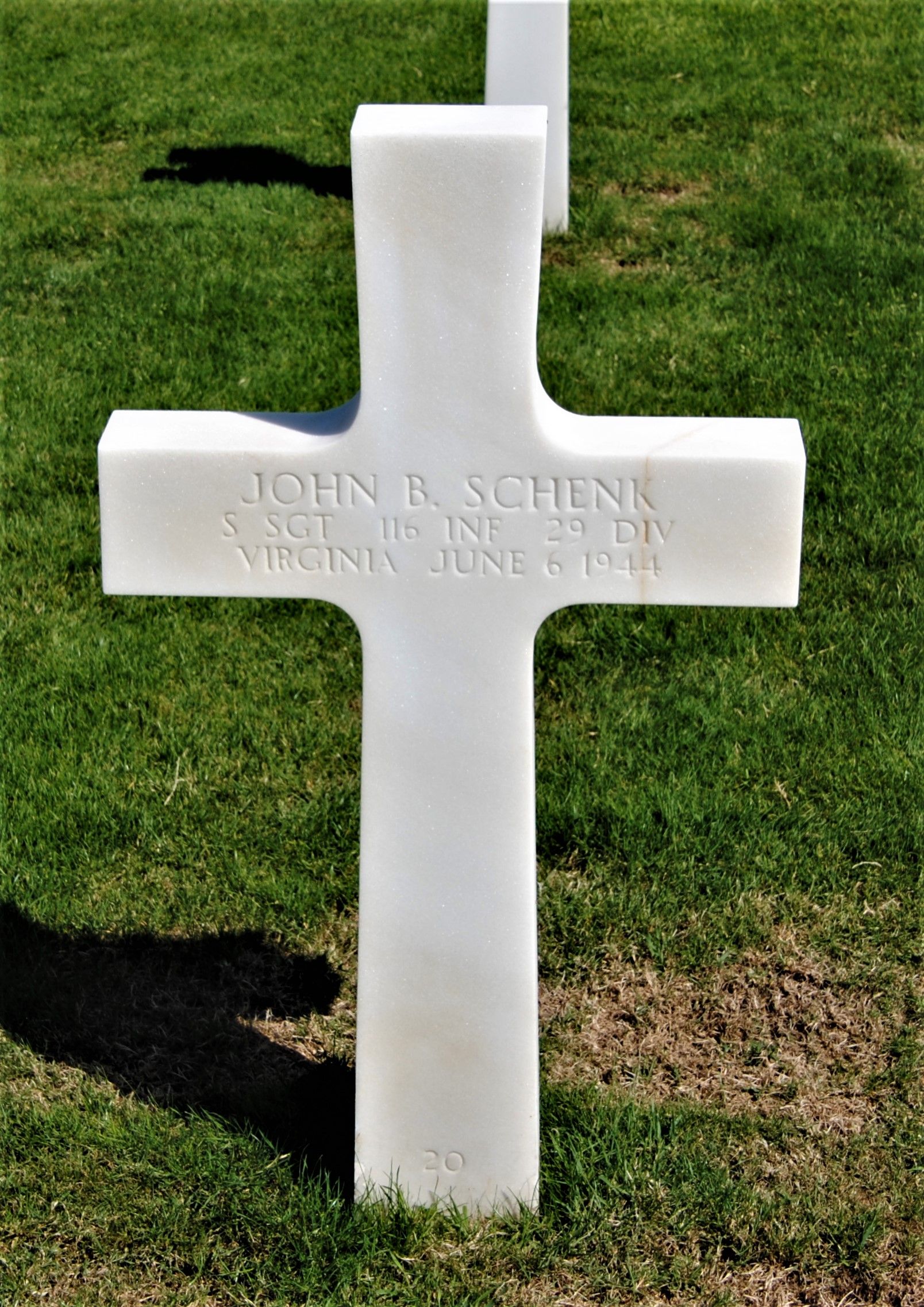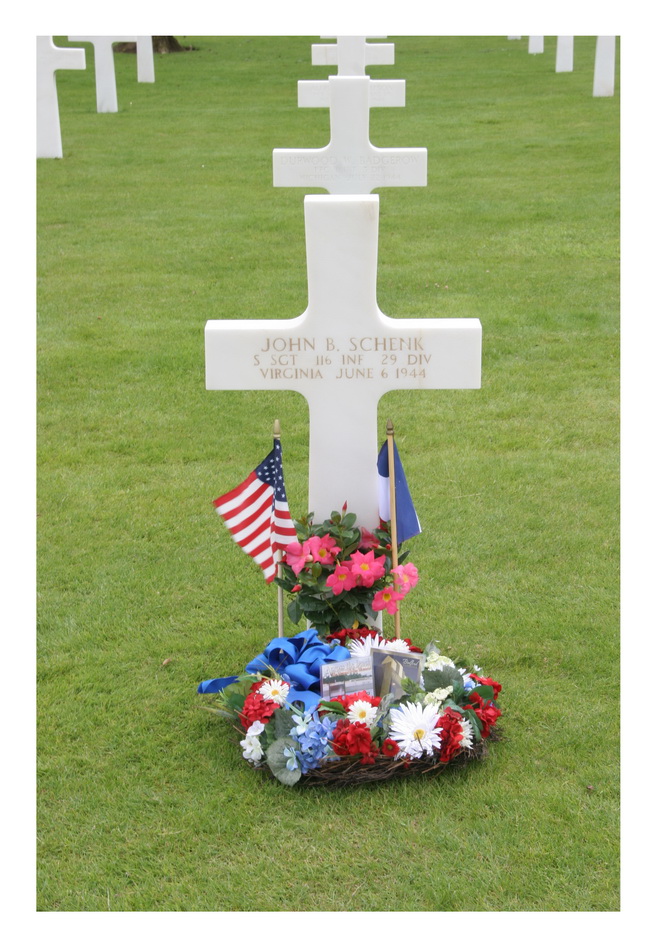Bedford's population in 1944 was about 3,200, and proportionally the community suffered the nation's most severe losses on D-Day, as well as all of World War II.
The Bedford County, Virginia Army National Guard soldiers who paid the ultimate sacrifice are:
SSgt Leslie C Abbott Jr., PFC Wallace R. Carter, PFC John D. Clifton, T/Sgt Frank Price Draper Jr., Capt Taylor Nicholas Fellers, PFC Nick N. Gillaspie, Pvt Bedford Turner Hoback, SSgt Raymond S. Hoback, Pvt Clifton G. Lee, SSG Earl L. Parker , PFC Jack G. Powers, PFC Weldon Antonio Rosazza, PFC John F. Reynolds, SSgt John B. Schenk, TSgt Ray O. Stevens, Master Sgt John L. Wilkes, SSgt Gordon H. White Jr., SSgt Elmere P. Wright, Sgt Grant C. Yopp
Overlord Synopsis and Links Courtesy of Greg Raike
__________________________________________________________________
(From the Roanoke Times June 6. 2020)
On June 3, 1944 — three days before the top-secret Allied invasion into Normandy — Ivylyn Schenk was sitting at home in Moneta in Bedford County listening to the radio. Ivylyn, a school teacher and wartime community activist, had married Sgt. John Schenk in August 1942 but hadn’t seen him since their honeymoon.
They corresponded by letter almost daily, but because of censorship, she was not certain where he was exactly (he was in southern England) or what his role might be in the rumored upcoming invasion. She hoped the invasion and the end of the war would come soon so her husband could return home.
Over the radio came an announcement that excited her, if for only a few minutes. Soon she started a letter that began:
“My darling husband,
About an hour ago a program was interrupted with an announcement that
Eisenhower’s Headquarters announced an Allied landing on the coast of France.
I was so excited that chill bumps goosed up all over me! I continued to listen and
in a few minutes learned that it was all a mistake! I’m so disappointed….”
What had happened was that a young teletype operator working in London for the Associated Press was practicing on what she thought was a disconnected teletype machine. She somehow triggered a tape in the machine containing the message “Flash Eisenhower’s headquarters announces Allied landings France.” The message was sent to New York and Latin America. In the two minutes before a follow-up “kill” message could be sent directing that the message not be used, the erroneous message was broadcast by some 450-500 radio stations in the U.S., including those of CBS and NBC, and announcements were made at sporting events. The New York Times reported the details of the foul-up the next day.
Fortunately, the Germans did not take this seriously. Berlin Radio reported on 3 June that “the invasion is nowhere near.” General Rommel, commander of Channel defenses, had returned to Germany.
The Allied invasion was planned for 5 June but delayed because of weather until 6 June. The landings were successful, but the Allies lost 4,414 men on D-Day alone, including the 20 men from Bedford County, including John Schenk.
Ivylyn Schenk and others in Bedford County would not learn of the deaths of their loved ones until mid-July, five weeks later. In the aftermath, Ivylyn did much to honor and memorialize her husband, including preserving John’s letters and her letters which John had sent back to her before D-Day. She continued teaching, for a total of 35 years, and in mid-1946 she married Ralph Hardy and raised a family. Later in life (she died in 2008), Ivylyn visited John’s grave, was interviewed often about the war, and supported the National D-Day Memorial.
Thanks to Contributor 46812135
Bedford's population in 1944 was about 3,200, and proportionally the community suffered the nation's most severe losses on D-Day, as well as all of World War II.
The Bedford County, Virginia Army National Guard soldiers who paid the ultimate sacrifice are:
SSgt Leslie C Abbott Jr., PFC Wallace R. Carter, PFC John D. Clifton, T/Sgt Frank Price Draper Jr., Capt Taylor Nicholas Fellers, PFC Nick N. Gillaspie, Pvt Bedford Turner Hoback, SSgt Raymond S. Hoback, Pvt Clifton G. Lee, SSG Earl L. Parker , PFC Jack G. Powers, PFC Weldon Antonio Rosazza, PFC John F. Reynolds, SSgt John B. Schenk, TSgt Ray O. Stevens, Master Sgt John L. Wilkes, SSgt Gordon H. White Jr., SSgt Elmere P. Wright, Sgt Grant C. Yopp
Overlord Synopsis and Links Courtesy of Greg Raike
__________________________________________________________________
(From the Roanoke Times June 6. 2020)
On June 3, 1944 — three days before the top-secret Allied invasion into Normandy — Ivylyn Schenk was sitting at home in Moneta in Bedford County listening to the radio. Ivylyn, a school teacher and wartime community activist, had married Sgt. John Schenk in August 1942 but hadn’t seen him since their honeymoon.
They corresponded by letter almost daily, but because of censorship, she was not certain where he was exactly (he was in southern England) or what his role might be in the rumored upcoming invasion. She hoped the invasion and the end of the war would come soon so her husband could return home.
Over the radio came an announcement that excited her, if for only a few minutes. Soon she started a letter that began:
“My darling husband,
About an hour ago a program was interrupted with an announcement that
Eisenhower’s Headquarters announced an Allied landing on the coast of France.
I was so excited that chill bumps goosed up all over me! I continued to listen and
in a few minutes learned that it was all a mistake! I’m so disappointed….”
What had happened was that a young teletype operator working in London for the Associated Press was practicing on what she thought was a disconnected teletype machine. She somehow triggered a tape in the machine containing the message “Flash Eisenhower’s headquarters announces Allied landings France.” The message was sent to New York and Latin America. In the two minutes before a follow-up “kill” message could be sent directing that the message not be used, the erroneous message was broadcast by some 450-500 radio stations in the U.S., including those of CBS and NBC, and announcements were made at sporting events. The New York Times reported the details of the foul-up the next day.
Fortunately, the Germans did not take this seriously. Berlin Radio reported on 3 June that “the invasion is nowhere near.” General Rommel, commander of Channel defenses, had returned to Germany.
The Allied invasion was planned for 5 June but delayed because of weather until 6 June. The landings were successful, but the Allies lost 4,414 men on D-Day alone, including the 20 men from Bedford County, including John Schenk.
Ivylyn Schenk and others in Bedford County would not learn of the deaths of their loved ones until mid-July, five weeks later. In the aftermath, Ivylyn did much to honor and memorialize her husband, including preserving John’s letters and her letters which John had sent back to her before D-Day. She continued teaching, for a total of 35 years, and in mid-1946 she married Ralph Hardy and raised a family. Later in life (she died in 2008), Ivylyn visited John’s grave, was interviewed often about the war, and supported the National D-Day Memorial.
Thanks to Contributor 46812135
